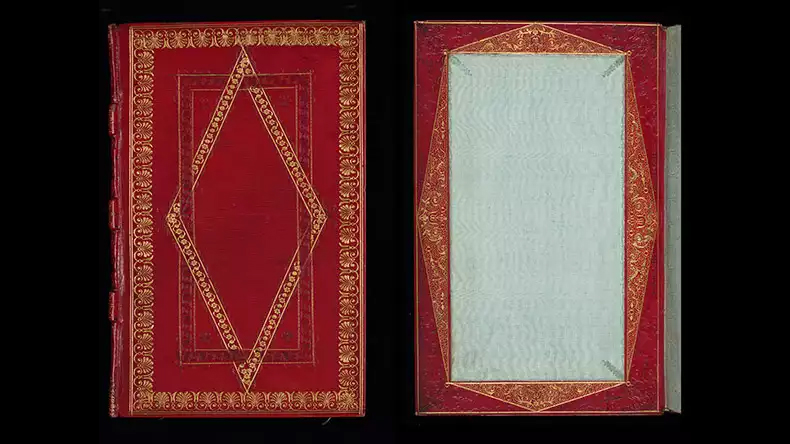What is a Doublure in Bookbinding?
I’ve organized a visit to Moscow’s Book Museum for a group of bookbinders and book lovers yesterday. Some of the things our guide told us weren’t new for me. However, I can’t say I came out of the museum without picking something up.
One of the words I had to google when I came back home was doublure. The word is of French origin and it seems to sound almost similarly in all major European binding traditions (including Russian).
I’ve seen books where the insides of the cover are as ornate as the outside face of the board. However, that was only some variation of a paste-down. Or, at least I didn’t think that could be some other thing.
Similarly, I know that inserts on the insides of the cover are used in bookbinding. However, usually I’ve seen them to be just a mean to level the surface under the paste-down, to mask the gap created at the edge of the turn-in of the covering material (it is called mirror in the Russian bookbinding tradition).
Well, doublure is something else.
It appears that the first known doublures came to us from Islamic tradition. The oldest known examples date from the 14th and 15th centuries. The first discovered covers belong to Egyptian-Syrian and Persian-Turkish traditions. Later that technique came to Europe. First through Hungary and Venice (in the end of the 15th century) and throughout the whole Italy.

First French appearances of doublures come from the 17th century. Edith Diehl in her Bookbinding: Its Background and Technique has comprehensive descriptions of how leather, silk and other doublures are made. She also makes a guess on the origin of the word. In her opinion it has derived from the Italian duplicare. Which is reasonable, considering the way doublures comes to Europe. In fact, both Italian duplicare and French doublure correspond to a double fold material, lining.
Initially doublures were just simply decorated pieces of leather (later — silk). However, already in the 18th and 19th centuries there were some heavily decorated doublures. Unfortunately, I cannot share the examples shown in the Book Museum I’ve been to yesterday — it is not allowed to photo the exhibits there. However, you can find some other examples on the internet and in the special literature:
- Practical information on how to make doublures in Bookbinding: Its Background and Technique by Edith Diehl;
- Many examples of Islamic doublures are given in The Technique of Islamic Bookbinding: Methods, Materials and Regional Varieties by Karin Scheper;
- Doublures at the Bauman Rare Books blog;
- Several pictures on one of the pages at the Princeton University Library web site;
- Smithsonian Learning Lab:
For more sources check here:
Please Support us on Patreon!

Moreover, starting with the pledge level of $3, you will get a digitized vintage book about bookbinding, book history, or book arts each month from us!
These pledges help iBookBinding to continue its work and bring more information about bookbinding and book arts to you!


